Gentrification vs. Revitalization – What’s the difference?
When you move into a neighborhood, you want to see new businesses rise up on your block, neighbors renovating their houses, and general improvements happening around you. But, not all improvement is equal, and sometimes too much improvement can put you, the homeowner, in a difficult financial position. Today, we’re going to talk about gentrification, the dangers of this process, and a community-centered alternative.
What is gentrification?
As its defined by Webster’s New World College Dictionary, to gentrify means “to convert (a deteriorated or aging area in a city) into a more affluent middle-class neighborhood, as by remodeling dwellings, resulting in increased property values and in displacement of the poor.” Simply put, gentrification is the process of changing the texture and culture of a neighborhood and raising prices along the way to the point where original homeowners can no longer afford to live there.
If you think about the city you live in, you can likely think of examples of gentrified neighborhoods. From the outside, gentrification often looks appealing. Residents from outside of the community view it as “cleaning up” the city and adding amenities that “all” people can share. But in reality, gentrification pushes often long-standing residents out of their homes as property taxes, rental rates and home prices rise.
Why does gentrification happen?
There are a number of reasons why gentrification happens. Oftentimes, investors target “inexpensive” neighborhoods in close proximity to neighborhoods with more wealth. They take advantage of the lower barrier to entry that comes with purchasing foreclosed or unoccupied properties, and they quickly add new amenities to attract money from outside of the neighborhood. Once a few investors come in and find success, other investors come in and do the same thing to businesses and houses. It continues to escalate from there – often to the point where people are approaching homeowners or traditional businesses and asking them to sell their space to make way for “progress” in the neighborhood.
Why is gentrification harmful?
Healthy cities need neighborhoods with varied home sizes and prices. This helps the most people find stability and create generational wealth through homeownership. The greatest harm that gentrification poses to neighborhoods is the displacement of long-term residents living in “inexpensive” neighborhoods. As property values increase, so do taxes. Sometimes, homeowners are forced to move because they can no longer afford to live in the neighborhood. Simultaneously, as outside investors plant businesses in neighborhoods undergoing gentrification, patrons start filling the pockets of outside investors. This does not keep capital in the community in the way that supporting a locally owned business would. In addition to displacement and money leaving the community, gentrification can strip the cultural texture of a neighborhood. Local eateries, businesses, parks, art installations, and even architectural style are changed during the renovation process. The features that original residents love about the neighborhood can start to fade away as outside influences make changes.
What’s the alternative?
You can improve and strengthen neighborhoods without gentrification, and the key is supporting revitalization efforts within the community. Through programming, like the business development programming sponsored by JPMorgan Chase, neighborhood residents can receive funding and training to open businesses in the communities they call home. By supporting local business growth, you are adding amenities and resources, encouraging cultural maintenance while investing capital into your neighbors. Another example is the Binghampton Community Land Trust. This coalition of active residents oversee renovation projects in the neighborhood. They identify blighted properties and invest funds to turn these homes into viable, affordable options for future homeowners. The projects have financial restrictions that help maintain home values in the neighborhood.
United Housing works with financial institutions, the City, homeowners and other community development organizations to prevent gentrification and support community revitalization through strategic investments. We believe that this is one of the best ways to preserve communities, promote homeownership and strengthen our city.
